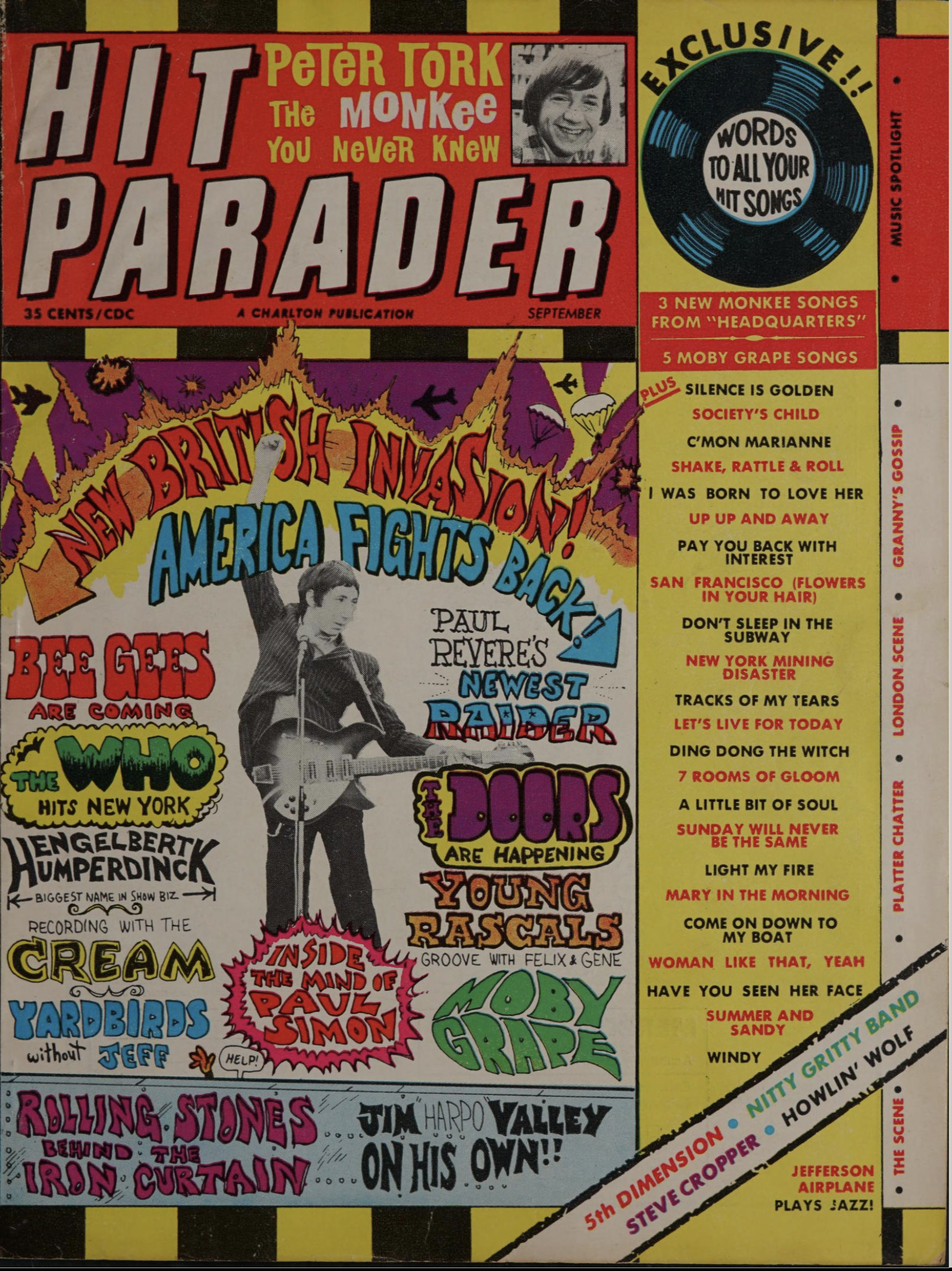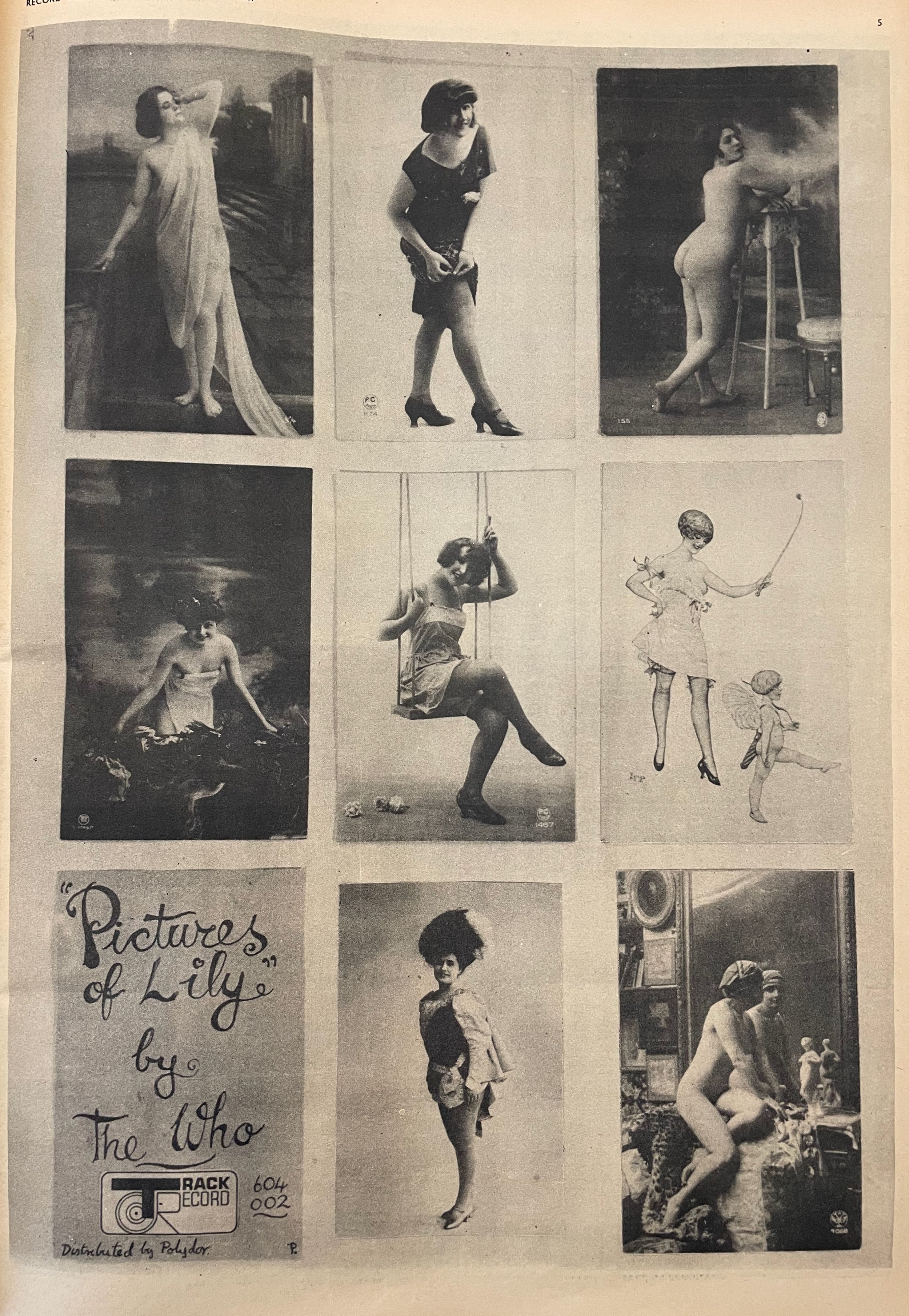The short-lived teen pop magazine Intro lasted less than six months – September 1967 to March 1968 – before it was folded into the long-running Petticoat. Until now, hidden in four of those issues were a Nik Cohn profile of Terence Stamp and a limited series of interviews with songwriters. Pete Townshend (of course) opened proceedings, followed by Roy Wood and Ray Davies.
Pete Townshend is a talker. He's sharp, imaginative and comes out with some very funny lines. He tends to shoot his mouth off but mostly talks sense and he's never boring.
Most important of all, he's got his own private progression and, at a time when most of the people in pop keep changing fads as often as they once changed their socks, he jumps on no bandwagons.
The interview was carried out while the Who were working on Sell Out and songs like ‘Jaguar’ were still in contention, but what leaps out is that the advertising concept – ‘one long mad montage’ – even at this early date, was figured as only taking up one side.
AD-OPERA
‘For instance, we might start with the four of us in barber-shop harmony, really sweaty and masculine, singing the one word Jaguar’, he says. ‘Then it’d go into some maniacal drumming by Keith, and it’d open out from there into someone like Fenella Fielding talking about Odo-ro-no and then straight on to a song I've written about a girl with smelly armpits. It would all be one continuous ad-opera and we'd make it as fast and insane as we could.
‘I think that it's a logical thing to Progress into writing songs about subjects like these; Jaguars and Odo-ro-no and all the rest. Instead of putting
‘Oh, my heart is breaking’, I put ‘Oh, my arms are stinking’, At least it makes change from the usual draggy old love songs, at least it's a bit more relevant to real lives and problems.
Cohn captures the idea of ambivalence, contradiction and indirection that sits at the heart of Townshend’s writing: ‘His songs are full of calm violence, sober insanity . . .’
‘I Can See for Miles’ is discussed along with a recent tour of America and Townshend’s thoughts on the band’s relationship with their audience and how it has changed and in turn changed the Who:
‘The point is that if you're going to reach any kind of communication with your audience, with all the thousands of people that you can't see in the dark, you've got to be prepared to put out a lot of physical energy and sheer hard slogging.
You've got to force them out of their apathy, you've got to shake them up and invade their privacy. You've got to get tough with them.
‘When we were just starting out at the Marquee, three years ago, I used to hold my guitar like a machine gun and I'd mow the entire audience down.
‘I'd start at one end of the room and swing round very slowly until every single person in the audience had been shot. The people at the far end of the line could see me coming and they would try to hide, they'd double up in pain and they'd really be frightened.
At the very least, they couldn't ignore me, they had to react. They didn't want to be killed.
‘That's the kind of communication we had originally and that we've tended to lose. We had to get it back again . . . The audience is king and pop musicians his court jesters’.
The magazine provided ecstatic reviews of both the single and the album
Rock n’ Roll Revival Time – Intro (January 27 1968)
1967 and Townshend and Cohn’s ideas about the pop/rock moment were completely simpatico:
Last year, the move was progression towards complexity and introspection. Now groups are tired of pretending to be camp intellectuals and want to get back to basics Already the Who, always in the lead with anything new, have started wearing authentic Rocker gear and performing Rock classics like Summertime Blues and My Way as a regular part of their stage act.
‘Pop was getting much too solemn’, says writer/guitarist Pete Townshend.
‘Rock was beautiful because it was direct. hard-hitting, loud, sexy and rebellious. Most Important of all it was incredibly glamorous.

























